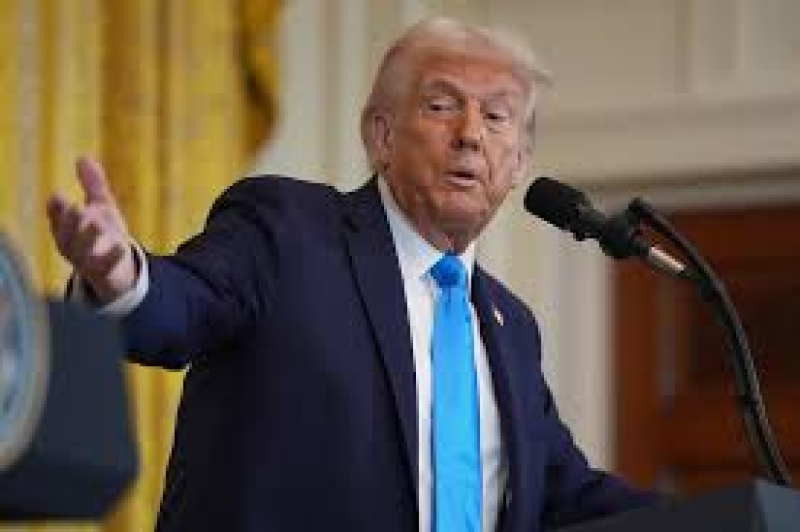- Beijing could be one best friend of Dhaka: Chinese Minister |
- Be alert for law, order: Home Adviser asks law enforcers |
- Dhaka’s air world’s 2nd worst Thursday morning |
- West Bank security situation remains alarming: UN agencies |
- Moyeen Khan for China's support to produce RMG raw material |
Trump to Announce 25% Tariffs on EU Goods Soon

U.S. President Donald Trump announced plans to impose 25% tariffs on goods imported from the European Union, claiming the bloc was created to "screw the United States." Speaking at a cabinet meeting, he said, “We’ll be announcing it very soon,” adding that the tariffs would apply to cars and other products.
In response, the EU stated it would "react firmly and immediately against unjustified tariffs." The announcement raised questions about Trump’s broader trade strategy, as he also hinted that tariffs on imports from Mexico and Canada, set to take effect on March 4, might be delayed.
An official later clarified that the tariffs on Mexico and Canada would still go into effect on schedule, with Trump planning to review border security actions by both countries before making any changes. Trump’s remarks on Europe, however, highlighted ongoing frustration with the EU’s trade policies, which he argues disadvantage American exporters.
“The European Union was formed to screw the United States— that’s the purpose of it and they’ve done a good job of it,” Trump said. “But now I’m president.”
The EU rejected these claims, with a spokesperson pointing out that the creation of a regional market in Europe has made it easier for American businesses to operate, calling the EU a “boon” for U.S. firms.
Tariffs are taxes imposed on imports, which businesses ultimately pay. Trump has frequently used them to push for changes in foreign policies, aiming to bolster U.S. manufacturing, raise revenue, and press countries into action on issues such as trade imbalances.
Since taking office, Trump has raised tariffs on Chinese goods and taken steps to impose duties on other imports, though he has also suspended some planned tariffs. “The 25% threat is in line with what he previously indicated,” said Tobin Marcus of Wolfe Research. “It’s concerning, but not totally unexpected.”
Earlier this month, Trump ordered 25% tariffs on goods from Mexico and Canada but suspended their enforcement until March 4 to allow for discussions on border security. However, during Wednesday’s cabinet meeting, Trump stated that the tariffs on these goods would now take effect on April 2, aligning with the expected release of broader tariff recommendations from the Commerce Department.
The trade announcement impacted financial markets, with major U.S. indexes declining and the peso and Canadian dollar gaining in value.

